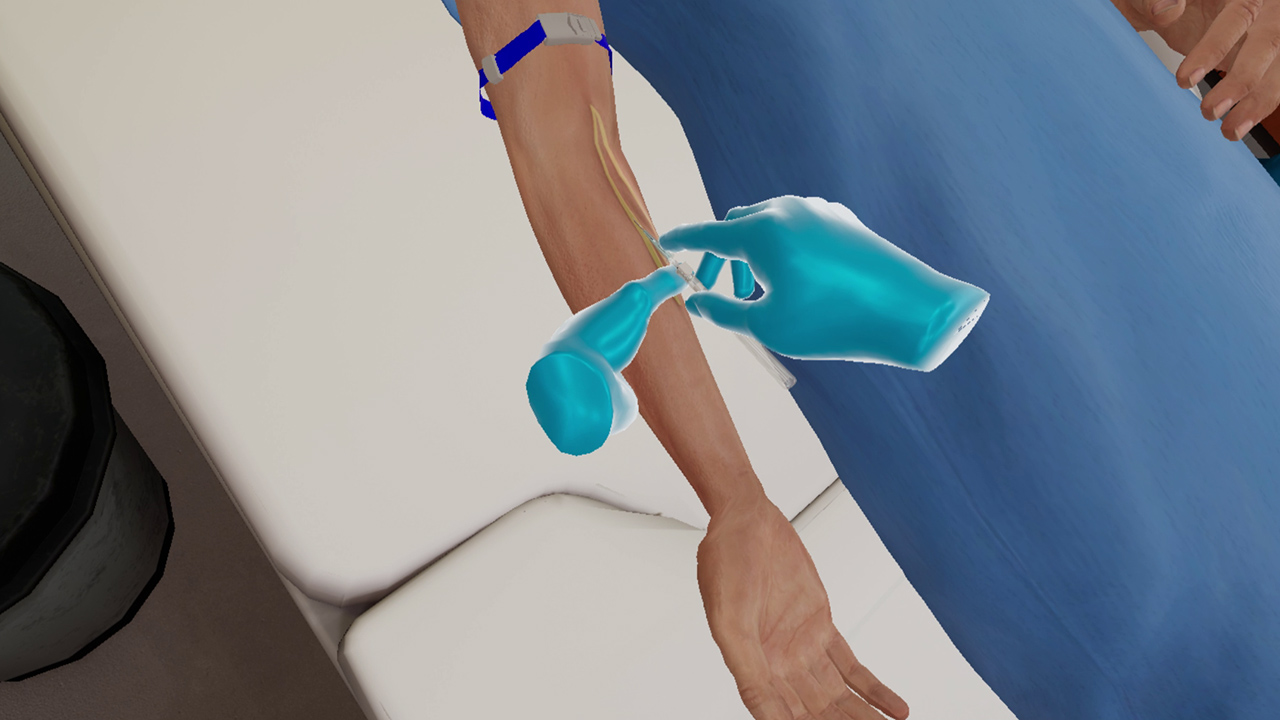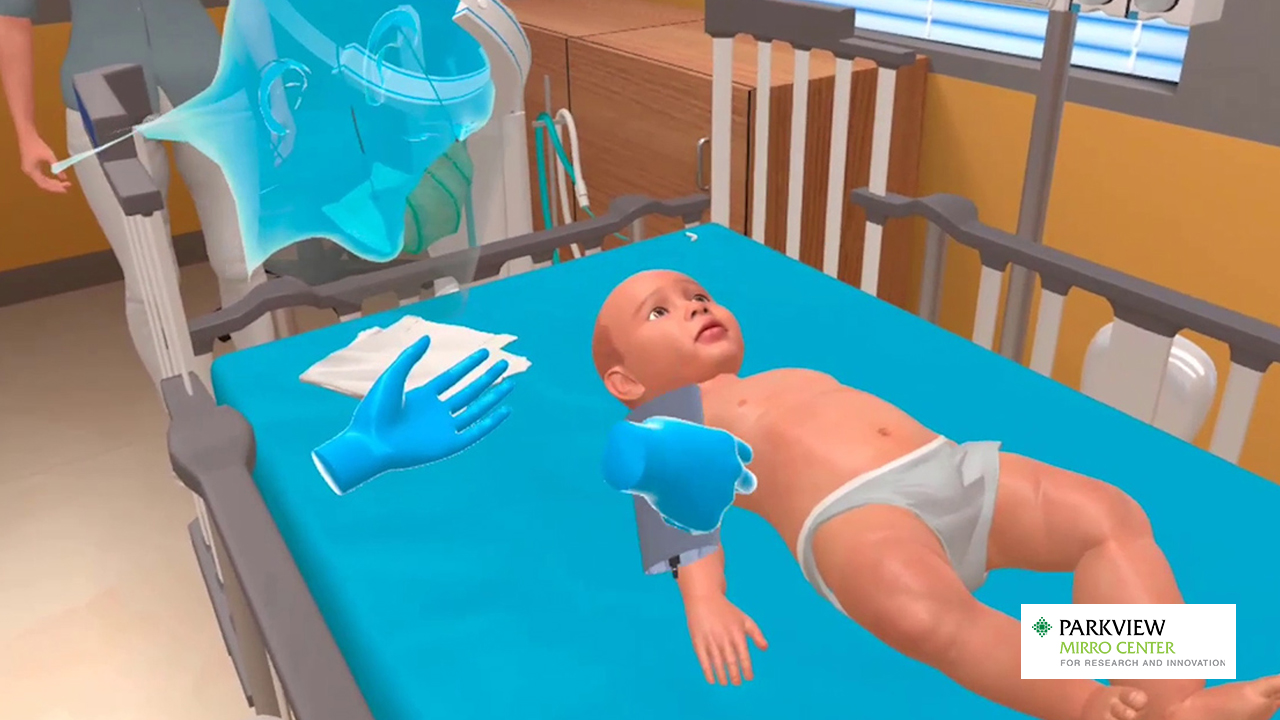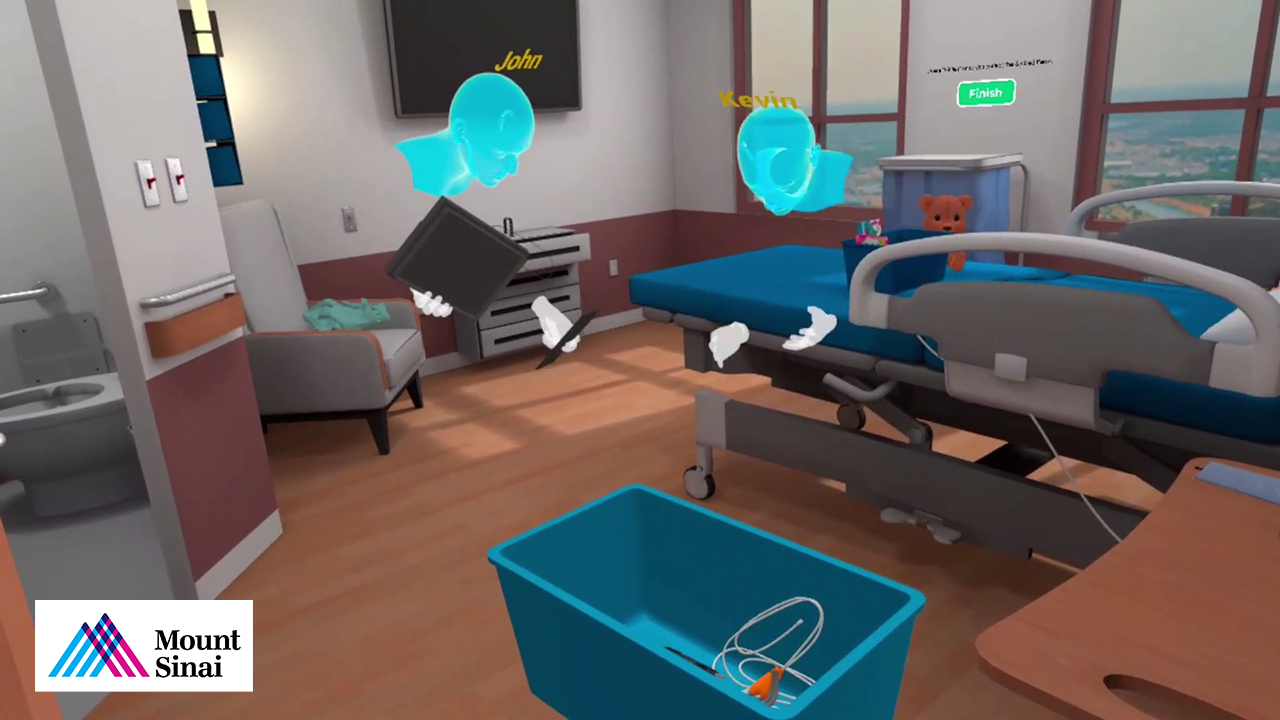
In the complex ecosystem of healthcare, patient safety stands as a cornerstone of effective treatment and care. Hospitals, the bastions of healing, carry the responsibility of not just treating ailments but also ensuring a secure environment for patients. MedVR Education and Mount Sinai Health System have come together to develop training solutions for nurses particularly focusing on patient safety. The role of nurses is pivotal in patient care. It goes beyond administering medication and performing procedures, making them instrumental in safeguarding patients’ well-being and safety as well. Additionally, nurses are also tasked with the responsibility of preparing rooms for patients, including those at risk of self-harm, such as those experiencing suicidal ideation. In such circumstances the sensitivity of their roles is elevated.
Patient Safety in Hospitals
Patient safety is a multifaceted concept. Hospitals are where patients seek treatment for various ailments. In performing their roles as caregivers, hospitals face the challenge of maintaining safety on numerous fronts. This includes preventing infections, averting medication errors, avoiding instances of falls, and addressing the mental health needs of patients, among other concerns.
The task of providing enhanced patient safety involves implementing protocols and systems that mitigate risks. Robust communication among healthcare teams, adherence to best practices, continuous training, and the use of technology are integral components in this endeavor. The significance of these tasks is increased when the need is to create a suitable care environment for patients at risk of causing self-harm.
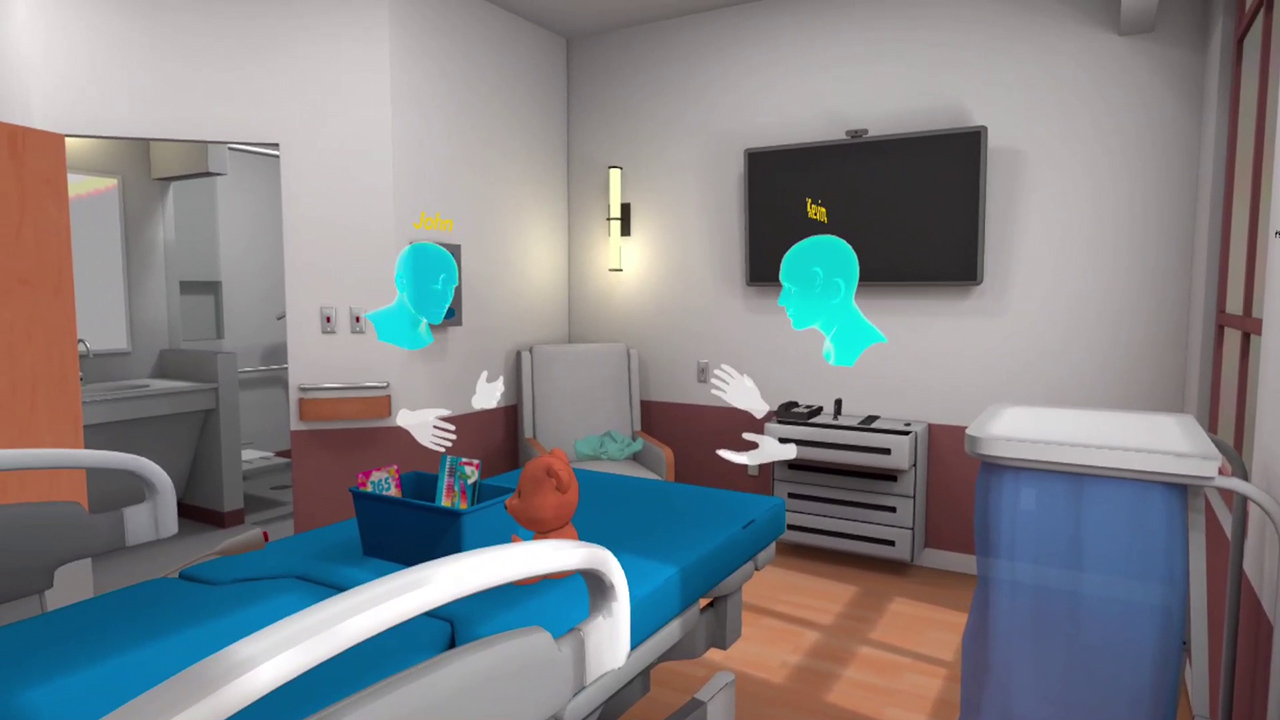
Removing items of potential risk from patient room.
Training in VR to Prepare Room for Suicidal Patient
Preparing rooms for patients at risk of self-harm, particularly those experiencing suicidal ideation, demands a comprehensive approach that prioritizes both the individual’s safety and their mental health needs. It involves careful considerations and meticulous actions to create an environment that minimizes potential risks. VR provides hands-on training, making it an effective way to practice.
When creating this specific simulation, the key objectives to be addressed included eliminating risks of self-harm, promoting a safe patient environment, and identifying objects that could cause patients’ risk. When simulations are relatable to the real-world setup learners tend to retain knowledge and skills better. Every aspect of these simulations is created in close consultation with the Mount Sinai Health System team to achieve realism in not just the environment but also the training process.
Users perform tasks that are a culmination of the following steps:
– Room Selection: Patients at risk of self-harm are often placed in specially designated rooms or areas within the hospital that promote increased supervision and reduced access to items that could be used for self-injury.
– Removing Hazardous Objects: Learners meticulously inspect the room to identify and remove any potential items that could be used for self-inflicted harm. This includes removing sharp objects, electrical cords, belts, and other items that pose a risk.
– Securing the Environment: Fixtures and furniture within the room may be secured or modified to prevent their use for self-harm. For instance, heavy items might be bolted down or made inaccessible.
– Restricted Access: Limiting access to certain areas within the room or hospital premises, such as windows, balconies, or other potential points of harm, is crucial. Restricting access to potential hazards is an essential preventive measure.
In a real-world setting the task of room preparation is followed by continuous monitoring and support that could include close observation, regular check-ins and collaboration with mental health professionals. This is supplemented with supportive interventions like emotional support, engaging patients in activities that distract them from disturbing/suicidal thoughts, and medication administration.
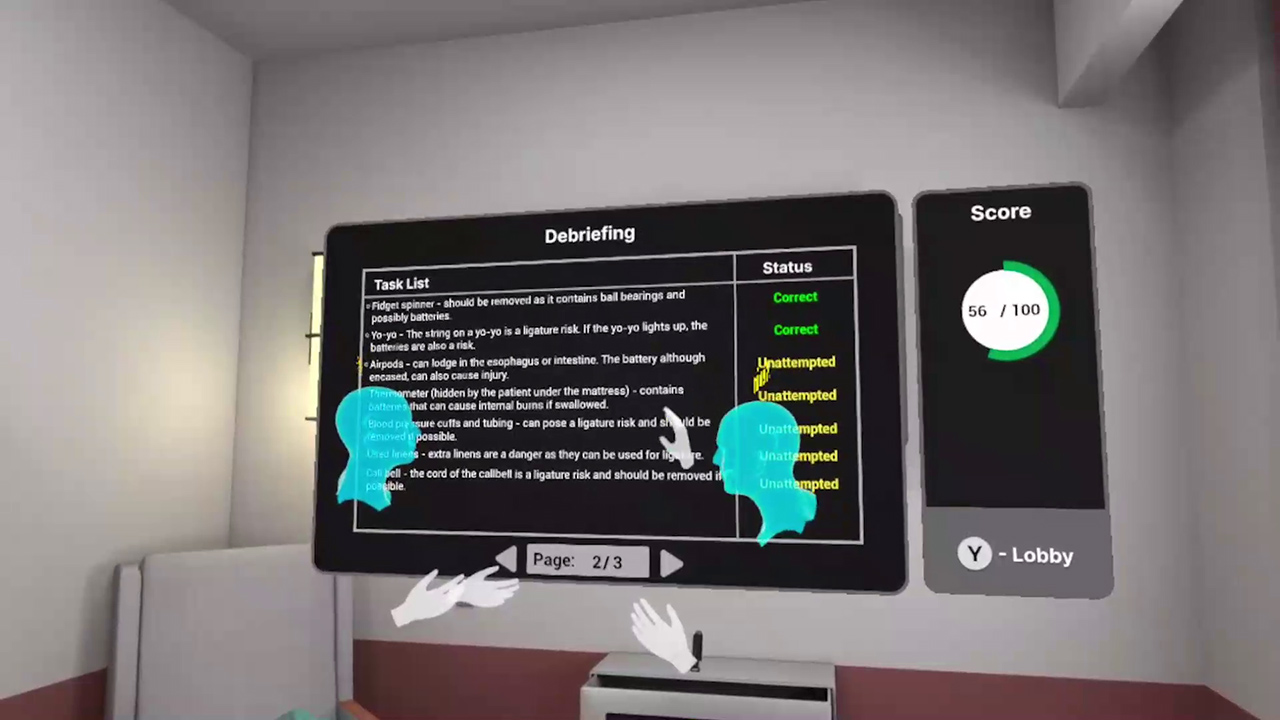
Sessions are followed by a debriefing to assess and analyze performance.
Benefits of Training in VR
VR is gaining significant acceptance in the field of learning and development owing to its immersive and engaging qualities. These very benefits and a host of others make it an ideal choice for healthcare training purposes.
– It provides hands-on practice opportunities in realistic environments.
-Gamification of the task results in greater understanding and retention
– Repeat sessions are possible with no time-lag in between sessions
– Need for maintaining physical training facilities is done away with
– Wear and tear of equipment is eliminated
– Hospital resources are not engaged during training sessions
In essence, preparing rooms for patients at risk of self-harm is a multifaceted process that requires a delicate balance between ensuring physical safety and providing appropriate mental health support. Nurses, alongside a multidisciplinary team, employ their expertise and compassion to create an environment conducive to healing while safeguarding the patient from potential harm.
About MedVR Education:
MedVR Education is a continuing education platform, founded with the specific aim of providing immersive and engaging VR training solutions to healthcare professionals. Its dynamically growing library witnesses the addition of 4-5 new solutions every month. MedVR Education is at the forefront of implementing the latest technology in the field of VR and training, ensuring that learners get the best possible learning experience.
Contact us to know more about VR in healthcare training or visit MedVR Education to explore the various programs we offer.

